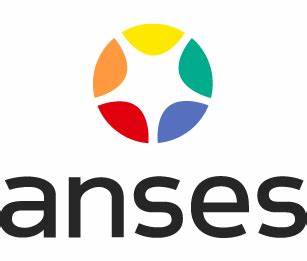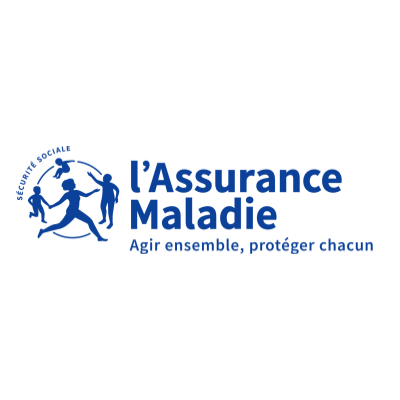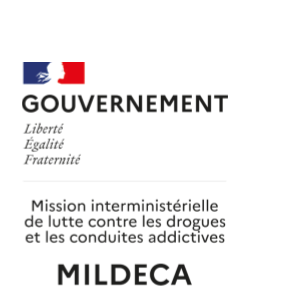Dopamine-Glutamate receptor heteromers in mice and humans: a targetable molecular candidate at the crossroad of addiction and risk factors (DOGMA)
Résumé de soumission
Contexte scientifique du projet
Compared to the general population, polydrug abusers more frequently exhibit comorbid mood disorders such as depression, which favors drug overconsumption, leading to increased risks of accidents, overdose and premature death. A prevailing hypothesis is that the high co-occurrence of these psychiatric disorders stems from shared neurobiological substrates, which may explain the detrimental synergistic effects between addictive substances, and increased frequency of associated mood-related symptoms. This hypothesis constitutes the backbone of the DOGMA project that is based on strong preliminary data originating from enduring collaborations between all partners. Indeed, the consortium has identified a specific mechanism, the heteromerization of dopamine receptors (DAR) and glutamate NMDA receptors (NMDAR), as a potential common molecular switch for both cocaine addiction and depressive-like symptoms. Our main goal is to test whether DAR-NMDAR heteromerization is a shared molecular signature for most abused addictive substances, and therefore constitutes a key molecular switch underpinning the detrimental interplay between drug addiction and comorbid mood disorders.
Over the recent years, all teams involved in DOGMA designed and validated cutting-edge methodologies to show that the formation of heteromers between dopamine (DA) D1 receptors (D1R) or D2R with glutamate (Glu) NMDAR was favored in striatal tissues of mice exposed to cocaine and in human subjects who suffered psychostimulant dependence. We recently developed an innovative interventional approach to disrupt these receptor complexes in a time- and region-controlled manner, which allowed us to causally link formation of D1R-NMDAR and D2R-NMDAR heteromers and the psychomotor sensitizing and rewarding properties of cocaine. Remarkably, Partners of the DOGMA project joined efforts to establish that formation of DAR-NMDAR heteromers was also markedly increased in the striatum following chronic social stress, which triggers key symptoms reminiscent of human depression.
Objectifs
To demonstrate that targeting these receptor heteromers could provide beneficial outcomes for most abused substances, comorbid depressive-like disorders, as well as for underlying risk factors, we propose a multidisciplinary and translational research program with 3 main objectives:
• Aim1: Assess whether DAR-NMDAR complexes differentially contribute to the modulation of volitional drug seeking versus physiological reward processing ;
• Aim2: Study whether the formation of DAR-NMDAR heteromers is a common molecular substrate with therapeutic potentials for alcohol, nicotine and morphine exposure and their poly-use ;
• Aim3: Explore whether risk factors for addictive behaviors trigger DAR-NMDAR heteromer formation, which could sustain the detrimental interplay between stress-related alterations and drug addiction.
This project displays strong foundations in compelling solid data obtained through established collaboration between all partners. It is built on the combination of state-of-the-art complementary expertise already mastered within the consortium in behavioral analyses, electrophysiological recordings, biochemistry, cellular biology, interfering peptide-based strategies and handling of well-characterized human brain samples. This project also benefits from previous expertise and breakthroughs of the consortium in order to achieve a further qualitative leap in understanding the mechanisms by which DAR and NMDAR interactions underpin addiction to distinct classes of abused drugs and associated risk factors. This project has true societal potentials because an imbalance in DA and Glu transmission has been acknowledged for decades, not only for addiction or depression, but also for a vast array of other psychiatric conditions. However, the classical pharmacological targeting of cognate receptors leads to either unresponsiveness in some patients or a loss of efficacy over time that is associated to the appearance of severe sides effects. This advocates for the proposed program, which completion has a high potential to contribute to a better understanding of the molecular mechanisms that govern drug addiction and underlying risk factors. The important amount of data already gathered strongly supports the relevance of targeting the interaction between DA and Glu receptors, rather the receptor themselves, thus opening new avenue for both a better knowledge of the mechanisms underlying drug addiction as well as comorbid psychiatric disorders, and the design of more selective therapeutic interventions. As such, the DOGMA project clearly falls within the aims of the axis “Fundamental research on mechanisms underlying addictions” of the present IReSP call on addiction.
Equipes du projet
Coordonnateur :
VANHOUTTE Peter
N° ORCID : 0000-0001-9236-4888
Structure administrative de rattachement : CNRS
Laboratoire ou équipe : Laboratoire Neuroscience Paris-Seine ; CNRS/UMR8246 ; INSERM/UMRS-1130
Autres équipes participantes :
Responsable de l'équipe 2 : BARIK Jacques
Institut de Pharmacologie Moléculaire et Cellulaire, CNRS UMR7275
Responsable de l'équipe 3 : TRIFILIEFF Pierre
Nutrition and Integrative Neurobiology, INRA UMR 1286
Responsable de l'équipe 4 : MECHAWAR Naguib
Douglas Institute, Montréal, Canada
Responsable de l'équipe 5 : MALDONADO Rafael
Universitat Pompéu Fabra; Laboratory of Neuropharmacology, Department of Health & experimental science
Dites-le nous !














